Say it with a flower - Say it with a flower
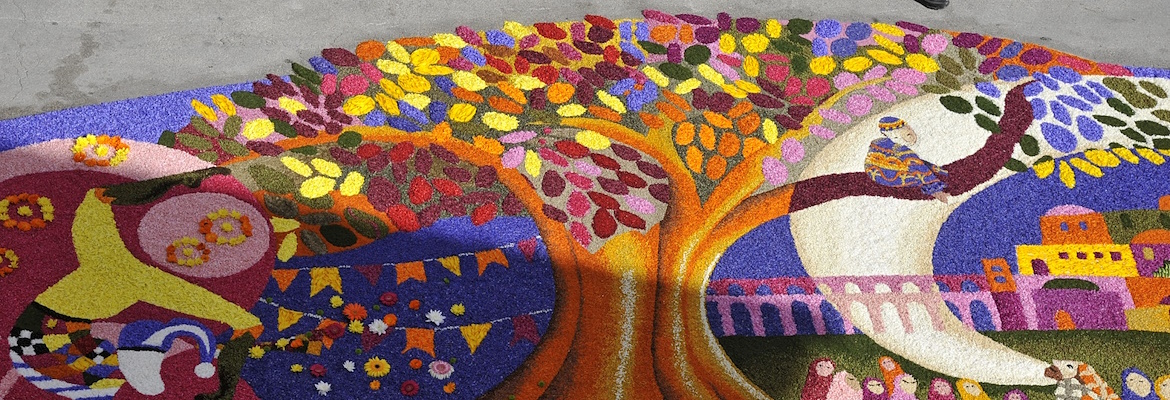
Say it with a flower
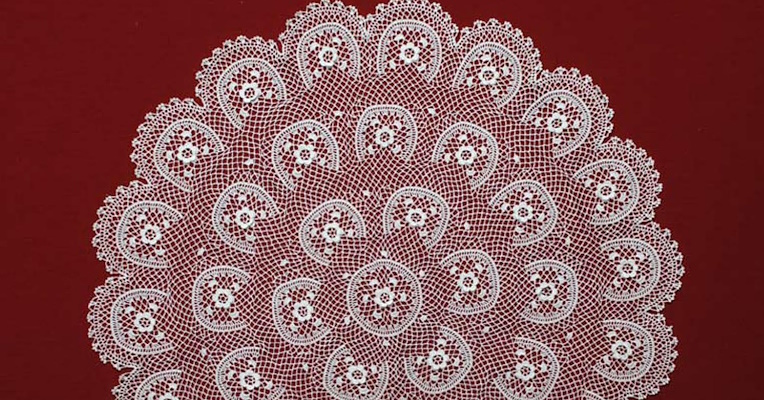
At the dawn of the 20th century, Marquise Elena Guglielmi founded a school on the Isola Maggiore of Lake Trasimeno where she taught a special crochet technique: what would come to be known as Pizzo Irlanda.
The women who lived on the island, daughters and wives of fishermen, were already skilled at weaving fishing nets, and quickly learned this new technique introduced by the marchioness.
Thus was born the tradition of Irish lace produced on the island, which marked a turning point for the island's economy, providing work for numerous women.
Irish lace is an extremely fascinating technique that, using normal crochet stitches, allowed to create mainly floral motifs: among these, the most famous is the rosette, the flower made of white thread that embodies the entire world of the Umbrian women who made the Maggiore Island and its lace Ireland famous.
This production takes its name from a type of lace that is produced in Irish convents using the bobbin lace technique. Umbrian lace is made with the crochet hook, a tool that speeds up its production without affecting its beauty and refinement, so much so that it soon became a sought-after aesthetic accessory especially for noblewomen from Perugia, Florence, Rome and the reigning royal house.
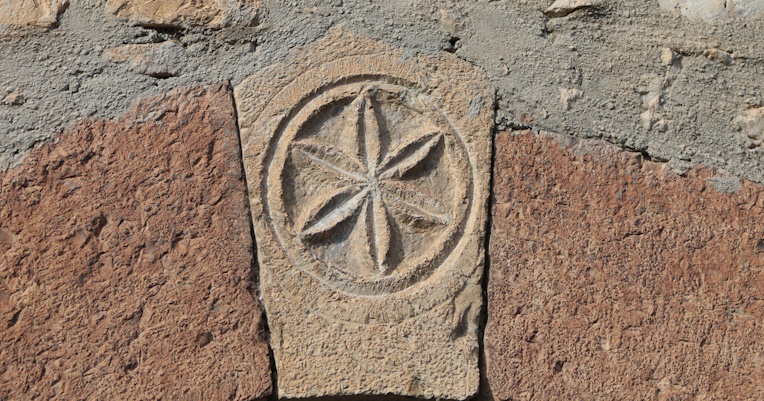
The six-petalled flower is such an important symbol that it is found in many cultures, but in Umbria it is often associated with a people who left numerous necropolises. Even the Etruscans used the flower of life on some funerary objects, placing it in plain sight on the roof of the symbolic house that would receive the ashes of the deceased, the cinerary urn.
This flower, placed inside a circle, carries with it a message of rebirth: the cyclical nature of its mystical geometry in addition to its funerary aspect makes it a symbol of protection engraved successively on objects as well as on lintels, windows and church portals. Again in Perugia, the same symbol is found engraved on the portal of the Templar complex of San Bevignate, testifying to how this image has also taken on an important significance for the renowned chivalric order of the Catholic Church.
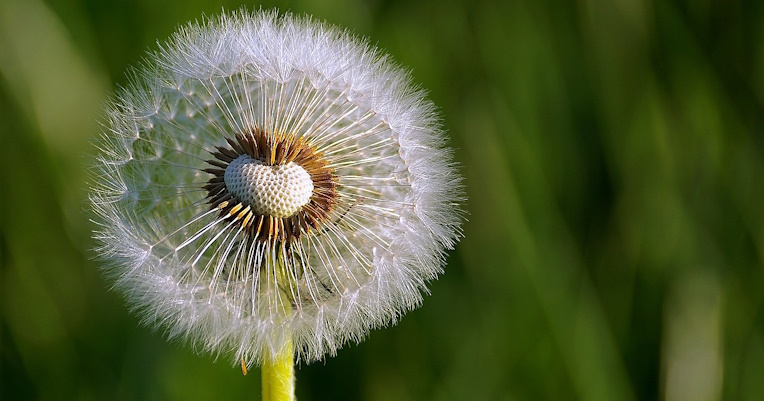
Although not exactly a flower, a detail hidden in a painting represents a real ritual that we have all, at least once, performed.
The work in question, which is now in the Galleria Nazionale dell'Umbria but comes from the monastery of Santa Maria delle Clarisse in Monteluce, is a wonderful and lively depiction of the Adoration of the Magi by Bartolomeo Caporali, who was probably Perugino's master.
Hidden in the folds of the ground, this painter had the foresight, or rather the pleasure, to paint with minute detail one of the most beautiful symbols of spring: a dandelion plant whose flower has now given way to a dandelion. Is the special flower in this painting a wish yet to be expressed?
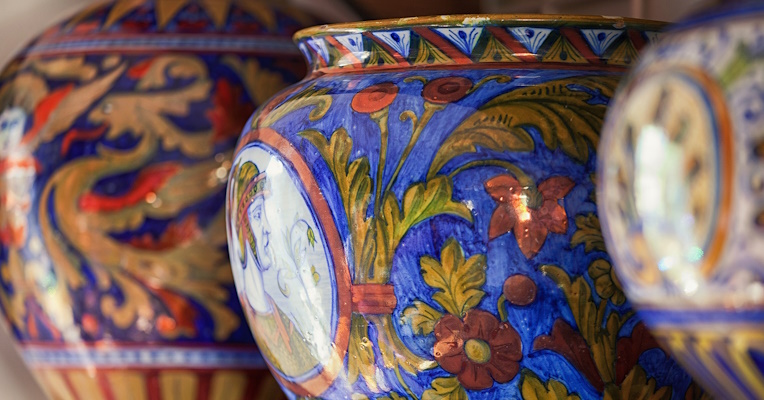
Flowers do not only appear on frescoes and painted canvases, but remain a decorative element that can embellish any object. In Deruta, the city of ceramics, they have been used in the production of majolica since the Middle Ages: whorls of flowers and leaves have been made since the dawn of this illustrious production, when the colours were obtained by drawing the desired shape with special preparations of metal oxides and thanks to a delicate and difficult game of firing at very high temperatures. To create the colours and shades of these floral elements, tin and copper oxides were used for green, iron oxides for yellow, and cobalt oxides for blue.
Sometimes the decorations were not only made for pure aesthetic taste: among the most curious and recognisable vases, there is a ceramic form known by the name of “albarelli”, which can still be admired today when peeking over the counter of some historic pharmacies.
“Albarelli” were vases made to store the products of the apothecary's shop, among which were many plants and flowers, and one can often find some vases decorated with the image of what they were intended to contain.
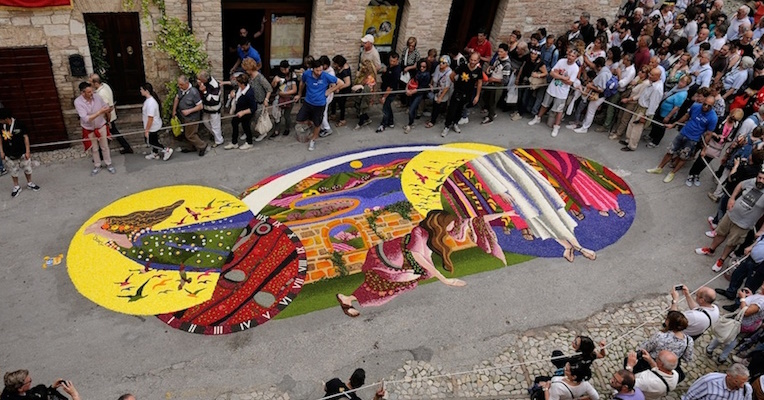
Flower petals become the substance and soul of Umbria's most famous “Infiorate” (flower carpets), held every year in Spello on the occasion of Corpus Domini.
Although the tradition of the “Infiorate” is by no means a recent one, it is Spello itself that is credited with transforming it into an art event as early as the 1930s, when a woman used the fragrant petals of broom and sprigs of wild fennel to create the first carpet painted with flowers.
Over the years, the event has not only retained its primacy but has grown so large that today more than 1,500 metres of flower carpets, mainly with a religious theme, are created each year. The design of each painting requires months of work: in addition to the design, the flowers are chosen, which, with their delicate scents, will compose the ephemeral brushstrokes that make the entire city bloom.
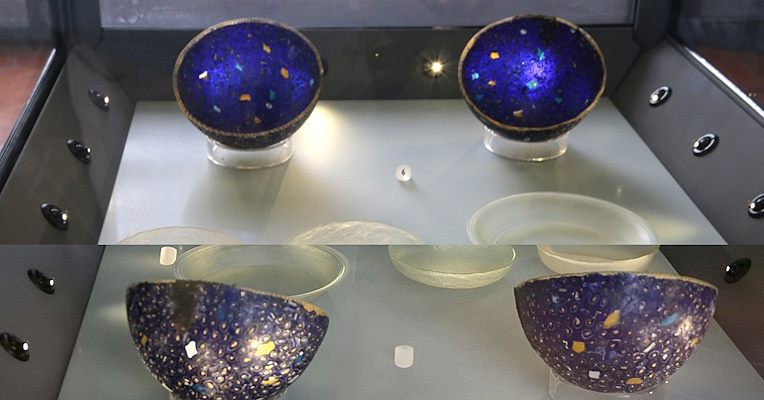
The ancient world achieved a mastery that is still unmatched today in glass-working techniques. Among the most ancient techniques for working the glass material, predating even glassblowing, there is a very special one with which it was possible to make very colourful vases and bowls, almost resembling a flowering meadow.
The glass objects were obtained by arranging a tiles mosaic of different colours, made by cutting cylindrically shaped strips of glass, which were first placed on a flat surface and then heated and laid on a support, often made of clay, which gave this delicate creation the desired shape.
Objects made with this particular and intricate working technique took on a colourful chromaticism that could be achieved through the juxtaposition of brightly coloured glass and, for this reason, was almost romantically nicknamed “millefiori glass”.
Some of these elegant millefiori cups have also been found in necropolises and archaeological contexts in Umbria, such as the two cups in shades of blue dated to the 2nd century BC from the necropolis of Todi.
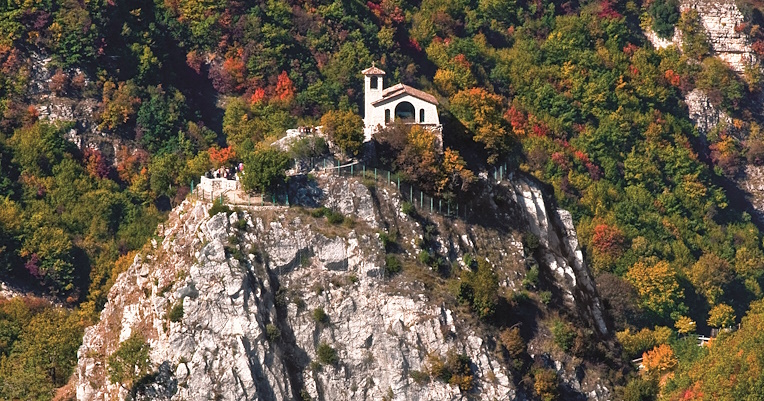
If it is true that Saint Rita is linked to bees and roses, there is another equally important figure in Cascia that has to do with flowers. That is the young girl depicted in the municipality's coat of arms, a red-haired girl holding a snake in one hand and a lily in the other. A local legend has it that, in a cave near Roccaporena, there lived an elusive and mysterious figure, very similar to the Apennine Sibyl. The woman was endowed with numerous magical powers such as that of clairvoyance, represented precisely by the snake she held in her hand.
This figure is none other than the nymph Porrina, after whom Rocca Porena itself is said to be named, depicted with a flower in her hand because of the prophecy linked to the place where she lived, in which a very important flower would be born. The legendary nymph's prediction came true in 1380, when in that small and remote Umbrian village a girl was born to whom her parents named Margaret, a flower that again prophetically symbolises the innocence and purity that guided the life of what would become the saint of impossible cases: Saint Rita.
























